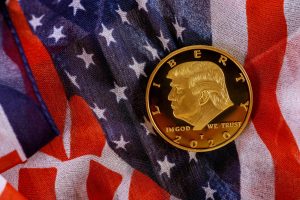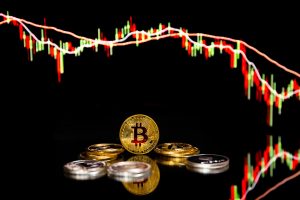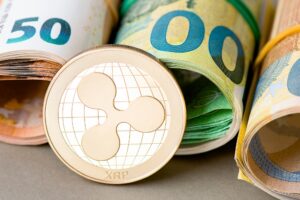Despite escalating trade tensions and market volatility following President Trump’s sweeping tariff announcements, the message from Wall Street’s biggest banks is cautious but notably optimistic: “The sky is not falling”—at least for now.
That’s the key takeaway from the latest earnings reports from the five largest U.S. banks: JPMorgan Chase (JPM), Bank of America (BAC), Citigroup (C), Morgan Stanley (MS), and Goldman Sachs (GS). In a rare moment of alignment, all posted strong first-quarter profits and revenue growth, bolstered in part by a surge in trading income amid tariff-induced market turbulence.
“The message has really been that the sky is not falling,” said Saul Martinez, a bank analyst at HSBC, in an interview with Yahoo Finance.
📈 Strong Earnings Across the Board
Collectively, the big five reported $35 billion in net profits, a 13% increase compared to the same quarter last year. Trading operations played a key role, with revenue in that segment jumping 17% to over $36 billion—a direct result of increased market activity following the rollout of tariffs in February and March.
Banks also reported:
- Continued consumer spending trends
- Stable loan default rates
- Ongoing profitability and liquidity among business clients
Despite the positive tone, none of the major banks issued updates to their full-year guidance—perhaps a reflection of the heightened uncertainty introduced by the latest White House moves.
🚨 “Liberation Day” Looms Over the Horizon
Importantly, the first quarter results do not reflect the aftermath of Trump’s April 2 “Liberation Day” announcement, which ushered in a new wave of tariffs and rattled global markets. Since then, both stocks and bonds have struggled, and the long-term impact on financial institutions and consumer behavior remains unclear.
Even bullish analysts acknowledge this. Mike Mayo, a longtime banking analyst with Wells Fargo, noted, “Events since April 2 can still be little more than a speed bump, so long as policy moves faster to help ease most of the uncertainty.”
That “policy” may include regulatory rollbacks the Trump administration has promised to the banking sector, intended to cushion any economic fallout from the trade conflict.
💬 Mixed Signals from Bank Executives
Although the headline numbers were solid, executives struck varying tones regarding the future:
- Goldman Sachs CEO David Solomon said the “prospect of a recession has increased.”
- JPMorgan’s Jamie Dimon warned of “considerable turbulence,” calling a recession a “likely outcome,” with potentially serious consequences for earnings and share prices.
- In contrast, Citigroup CEO Jane Fraser avoided using the word “recession” entirely during her call with analysts. In a statement, she said, “When all is said and done… the U.S. will still be the world’s leading economy.”
Bank of America’s Brian Moynihan offered a similarly upbeat outlook, stating, “Our research team doesn’t see a recession in 2025.” He pointed to continued consumer spending and profitable corporate clients as indicators of a resilient economy—but cautioned that “nobody has a perfect crystal ball.”
🏦 Investment Banking Holds Steady—for Now
Another unexpected bright spot was investment banking income, which showed strength in Q1 despite earlier predictions of a slowdown. Though some M&A and underwriting activity has paused, most bank executives framed the delays as temporary.
“I’m saying pause versus delete,” said Ted Pick, CEO of Morgan Stanley, referencing delayed deals in light of market uncertainty.
Still, banks aren’t ignoring potential risks. JPMorgan, BofA, Citigroup, and Wells Fargo collectively added $8.4 billion in provisions for loan losses—a 29% year-over-year increase and 9% higher than the previous quarter. This proactive measure indicates growing concern over potential credit risks as the economy adjusts to a new tariff landscape.
⚖️ Cautious Optimism, Uncertain Outlook
In summary, while the numbers suggest resilience and profitability, the broader outlook remains clouded by uncertainty around trade policy, potential regulatory shifts, and global economic response. Analysts warn that the second quarter could look very different if tariffs continue to disrupt supply chains and consumer confidence.
Ken Leon of CFRA Research summarized the prevailing mood: “We’re still in a cloudy period. It’s going to be choppy from here, and it’s exhausting.”
Whether that cloud clears—or turns into a storm—will depend on Washington’s next moves, and how global markets react in the weeks ahead.







